Slow Talk: The ARCH of Thematic Engagement
Building Mentionship by Sharing themes accurately
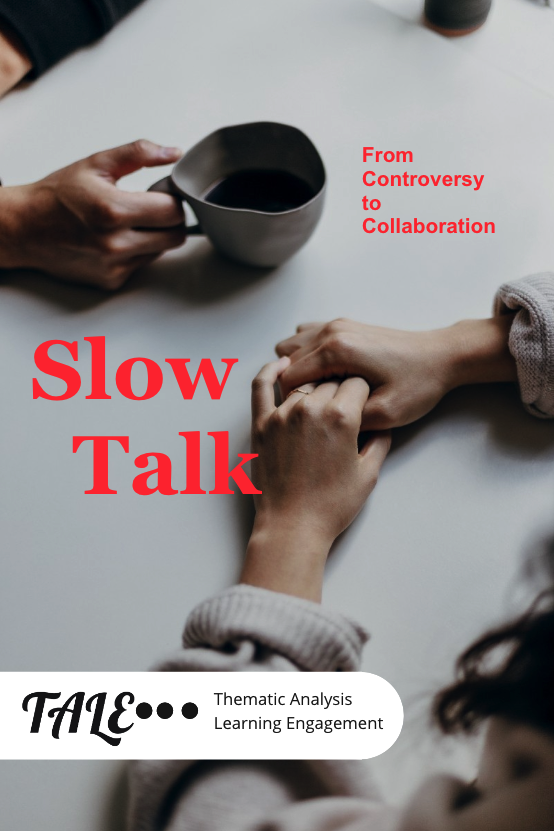
The Slow Talk project is a collaborative project between Activity Analysis Center and TALE Center.
TALE stands for Thematic Analysis Learning Engagement. I launched TALE as a new Knowledge Center on Jan 1, 2023. It aims to run the Thematic Engagement project with the following mission:
Telling the story of innovation, thematically!
You can find more information at https://medium.com/tale500
The Slow Talk Project
The Slow Talk project is launched as a possible theme on Jan 23, 2023. Inspired by a friend of mine, I decided to use “Slow Talk: From Controversy to Collaboration” to frame a thematic space and run a knowledge curation project in order to achieve “improve communication” and “enhance understanding”.

The ARCH Framework is a knowledge resource of the Slow Talk project. Based on the ARCH Framework, I developed a working definition of the theme "Slow Talk".

I also used four stages to define "the Tendency of Slow Talk" which gives a path to the "Slow Talk" thematic space.

You can find more details in TALE: How to develop a framework for a possible theme called “Slow Talk”?
Think Together: Shared Theme
This article aims to introduce a series of diagrams for "Think Together: Shared Theme" which is the third stage of ARCH.
The diagram below is the basic model of "Think Together: Shared Theme". We will start with it and expand it to a more advanced version.

The primary theoretical resource behind the above diagram is "Themes of Practice". You can find more details in Themes of Practice (2019–2021).
In July 2021, I conducted an empirical study titled Themes of Practice, Social Media, and Interpersonal Communication and wrote a 56-page report. Some ideas are adopted for the present model:
- Primary Theme
- Existing Themes and Emerging Themes
- Interpretation
- Mentionship
I also consider Relevance Theory as a theoretical background.
In the rest of the article, I will use a real conversation on Linkedin as an example and develop a method for Mapping Thematic Conversation.
Mapping Thematic Conversation
Based on the basic model of "Think Together: Shared Theme", I expanded its unit of analysis from a single theme to a theme network.
In simple words, a theme is a meaningful keyword, and a theme network is a set of connected meaningful keywords.
In order to discuss theme networks, I add two terms to the model.
- Initial Theme: a meaningful keyword that triggers a conversation
- Focus: A person's Situational Theme Network
- Landscape: A person's Relevant Theme Network
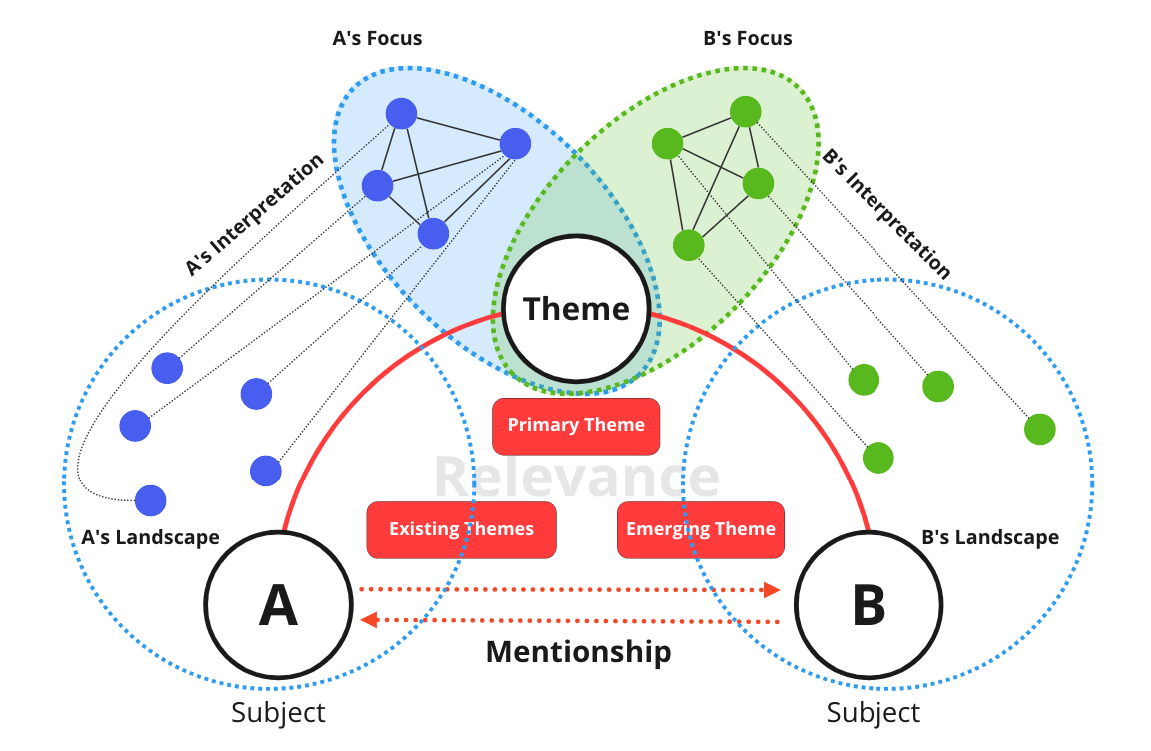
"Focus" is about situational conversations. For example, a conversation around a post on Linkedin, a discussion around a Twitter thread, an email conversation, etc.
Once a person particulate in a situational conversation, a set of themes from his/her life/work themes would be activated. These themes become a person's Focus. We can detective a person's Focus (Situational Theme Network) from comments, messages, etc.
However, it is not easy to see "Landscape" which refers to a person's Relevant Theme Network. A person can't say many themes in a situational conversation, but he/she always thinks about more themes than what he/she could say. Landscape (Relevant Theme Network) refers to a set of themes that have a direct connection with the Situational Theme Network.
In other words, we see a person's thematic thinking and speech as a whole which has two parts:
- Focus (Situational Theme Network): speech in the situation.
- Landscape (Relevant Theme Network): thinking in the mind.
If Landscape (Relevant Theme Network) is in the mind, how can a person know another person's Landscape?
Social network services platforms share a set of design patterns such as Profiles, Posts, Messages, Streams, etc. These patterns offer various ways to allow a person to know other people.
- Profiles: a person may use some keywords to describe his/her life/work interests and significant experiences.
- Posts: a person may actively share ideas and stories by publishing posts. In this way, he/she builds a dynamic autobiography in which we can find his/her life themes.
- Messages: while Profiles and Posts are public, Messages are a private communication channel. In a private conversation, a person could unfold more relevant themes for others.
A deep thematic conversation requires each other to take two moves:
- Move from My Focus to Your Focus
- Move from Focus to Landscape
The first move aims to achieve a good situational thematic conversation on the surface. The second move could build a deep relevant thematic conversation.
Based on a deep thematic conversation, two people can build a great mentionship which refers to mentioning each other relevantly and accurately.
This is a small step to building social capital, at least for professional workers.
The "Oliver - Susan" Thematic Conversation
On Jan 28, 2023, I saw a post published by Susan Hasty on Linkedin. I was curious to know how did she use the term "Social Affordance".
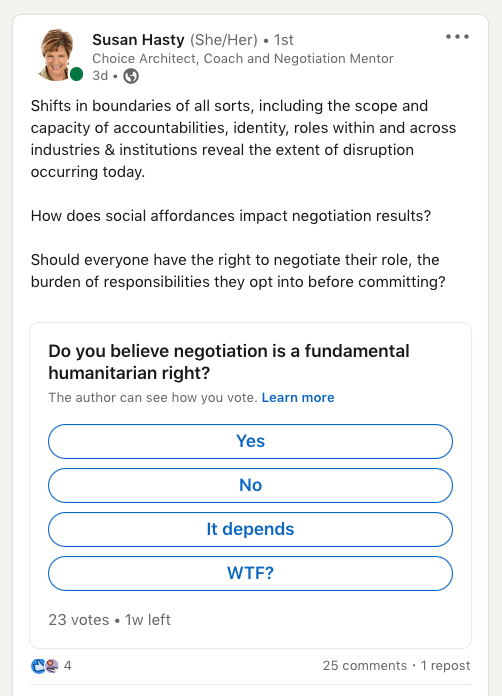
I just made a comment:
What does "Social Affordances" mean in this discussion?
Susan replied to me:
How would you define it in the context of negotiation, Oliver Ding?
I replied to her:
Though the term Affordance is coined by James J. Gibson for his theory of ecological perception, the term is often misused in the literature in diffuse and imprecise ways. Gibson doesn’t use “Social Affordance” in his book.
There is a babble of voices around the term ‘social affordance.’ Some ecological psychologists use the term ‘social affordance’ for three domains of contemporary ecological research: social perception, social interaction, and cultural practices.
Outside ecological psychology, some authors use the term ‘Social Affordance’ for special purposes in their domains, most authors expand the original meaning of Affordance from perception-based relative aspects to non-perception analysis.
How did you learn the term "Social Affordances"? And, what's your original purpose for using this term for discussing negotiation?
This led to a meaningful thematic conversation. We made several comments, then moved to private messages, then moved to email discussion.
Eventually, I realized this is a great example of the Slow Talk project and the ARCH framework.
Focus: Situational Theme Network
The initial theme "Social Affordance" triggered our conversation. It is also connected to our situational theme network. The diagram below highlights our different focuses.
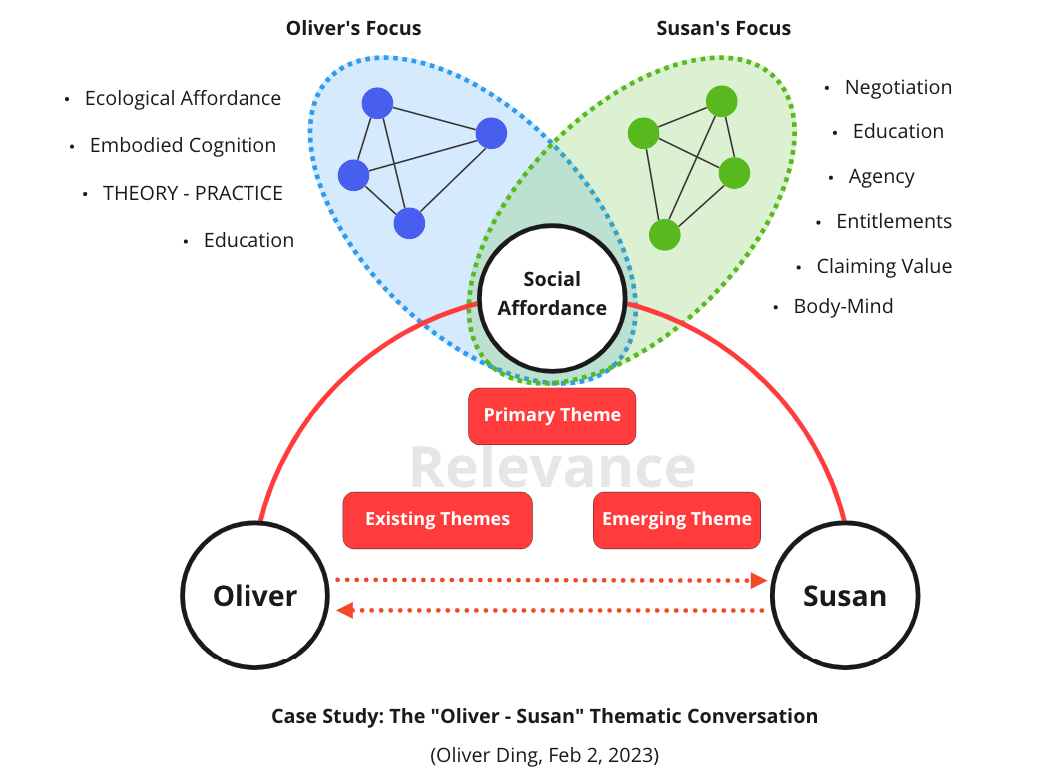
Susan's Situational Theme Network:
- Negotiation
- Education
- Agency
- Entitlements
- Claiming Value
- Body-Mind
Oliver's Situational Theme Network:
- Ecological Affordance
- Embodied Cognition
- THEORY - PRACTICE
- Education
You can find our original comments on Linkedin and re-detective these themes.
Susan's Landscape
We moved our conversation to private messages on Linkedin. From the conversation, I knew more about her life themes. See the diagram below.
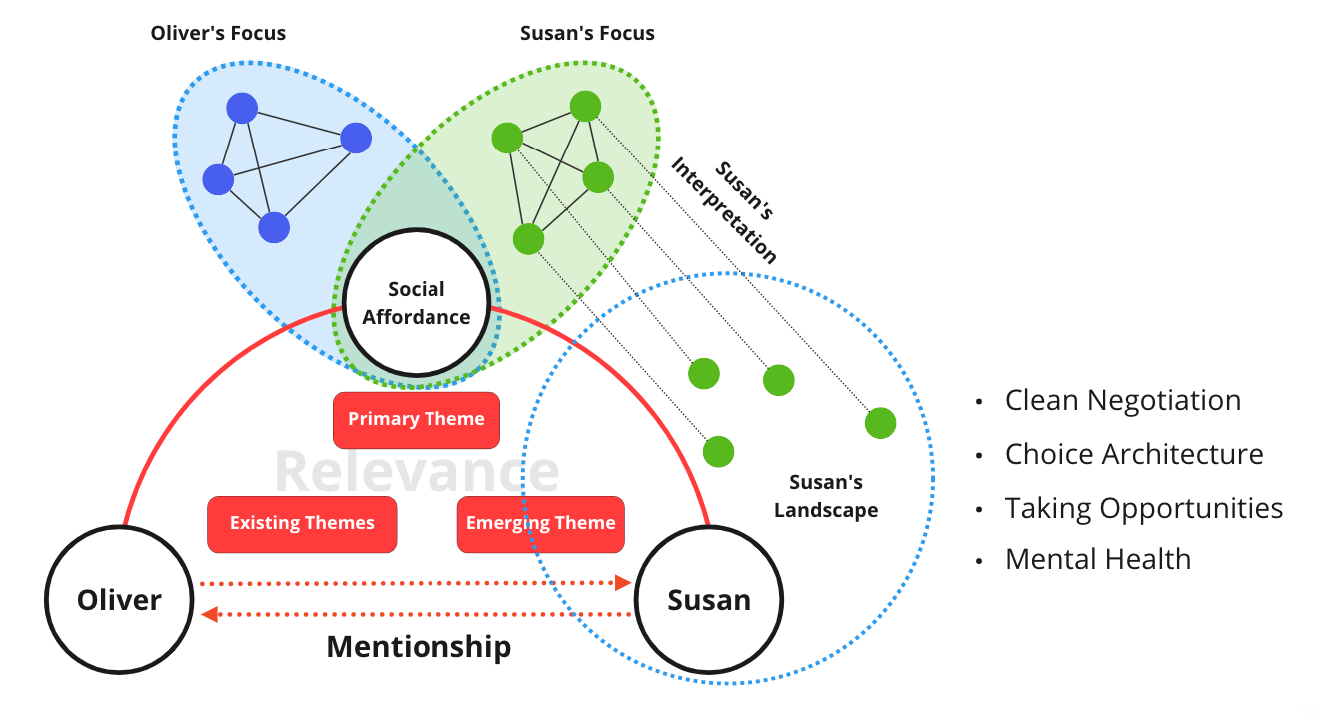
There are four themes that form a theme network about her present career landscape.
- Clean Negotiation
- Choice Architecture
- Taking Opportunities
- Mental Health
There are two primary themes in this theme network:
- Clean Negotiation uses Negotiation as context for practice to enable people to learn about themselves, their environments, and their situations in order to seize opportunities (entrepreneurial doing).
- The other is Choice Architecture, which is scaffolding to governance literacy.
Taking Opportunities and Mental Health are two secondary themes.
I'd like to say that Education and Learning should be a secondary theme in her theme network since she mentioned "enable people to learn about themselves, their environments, and their situations".
Oliver's Focus
Later, we moved to using email for conversation. On Jan 31, 2023, I sent an email to her and listed several relevant themes for reference.
- Value Engagement
- ARCH
- Supportance
- Collaborative Project Engagement
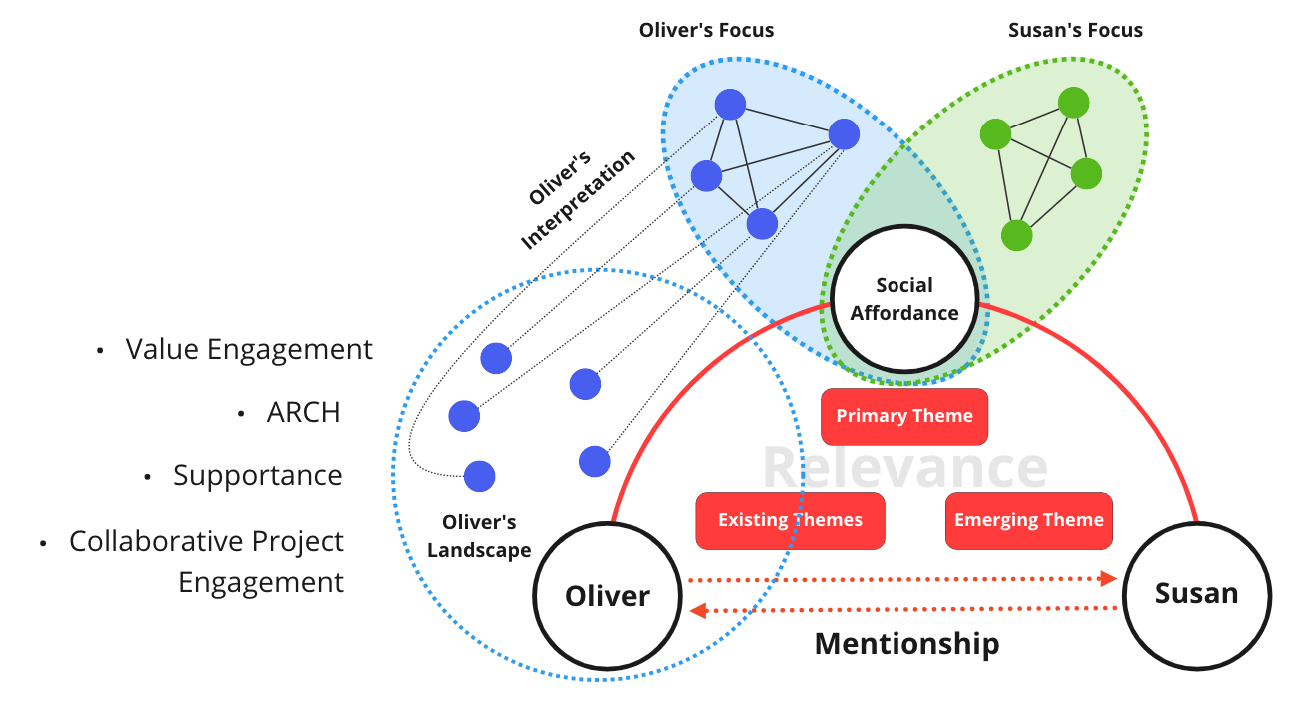
Susan mentioned a thought experiment with three concepts: Affordances, Agency, and Entitlements in her comment. In order to understand her idea, I used the ARCH framework to make a new diagram called "Value Dynamics".
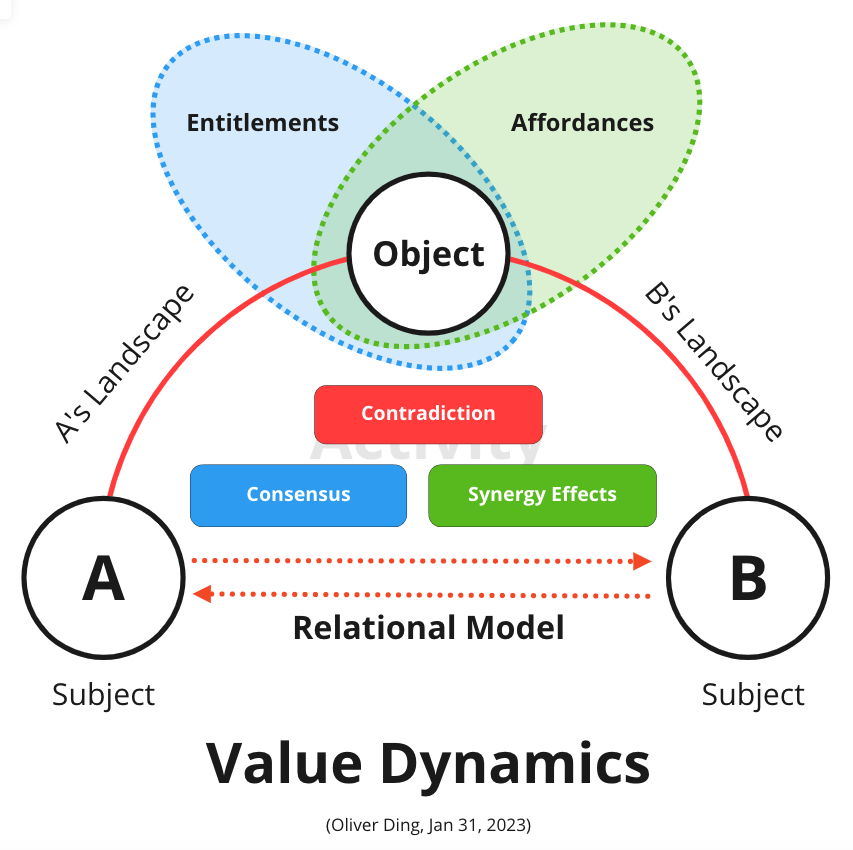
In the situation of Negotiation, two subjects are working together around a Shared Object. The ARCH model uses "Work Together" to describe this situation.
I am not familiar with her terms of Affordances, Agency, and Entitlements. So I use "Value Dynamics" to name this diagram. The following is my work definition for the discussion.
- Object: it refers to material objects. Because I only use "Affordances" for material objects.
- Affordances: the potential action opportunities of using an object by a particular person.
- Entitlements: a fair evaluation of the value of an object due to social norms.
I don't add "Agency" to the diagram because it is all about agency.
The root of the contradiction in value claiming is due to the three types of differences:
- The difference between the two subjects' skill of perceiving Affordances of an object.
- The difference between the two subjects' interpretation of Entitlements of an object.
- The difference between Affordances and Entitlements. There is no easy way to define the value of an object. It all depends on the context and the situation.
I agree with Susan on the statement of "Negotiations are ALL uniquely context-specific. No situation is exactly the same. Mainstream pedagogy doesn't contain the complexity needed to absorb the complexity of the reality on the ground."
Affordance is about the Perception of Ecological Structure between Object and Person. It requires people to jump from Language to Perception.
However, Entitlements are about the Interpretation of Social Norms. It requires Language.
We need to jump between Body-based Perception and Language-based interpretation. This is a very hard challenge for many people.
So far, I only use "material objects" for our discussion. For non-material objects, we need a new concept: Supportance.
I also mentioned a canvas called "Value Engagement" which is a by-product of the D as Diagramming project (2021). You can find more details in D as Diagramming: The Value-fit Framework and Canvas.
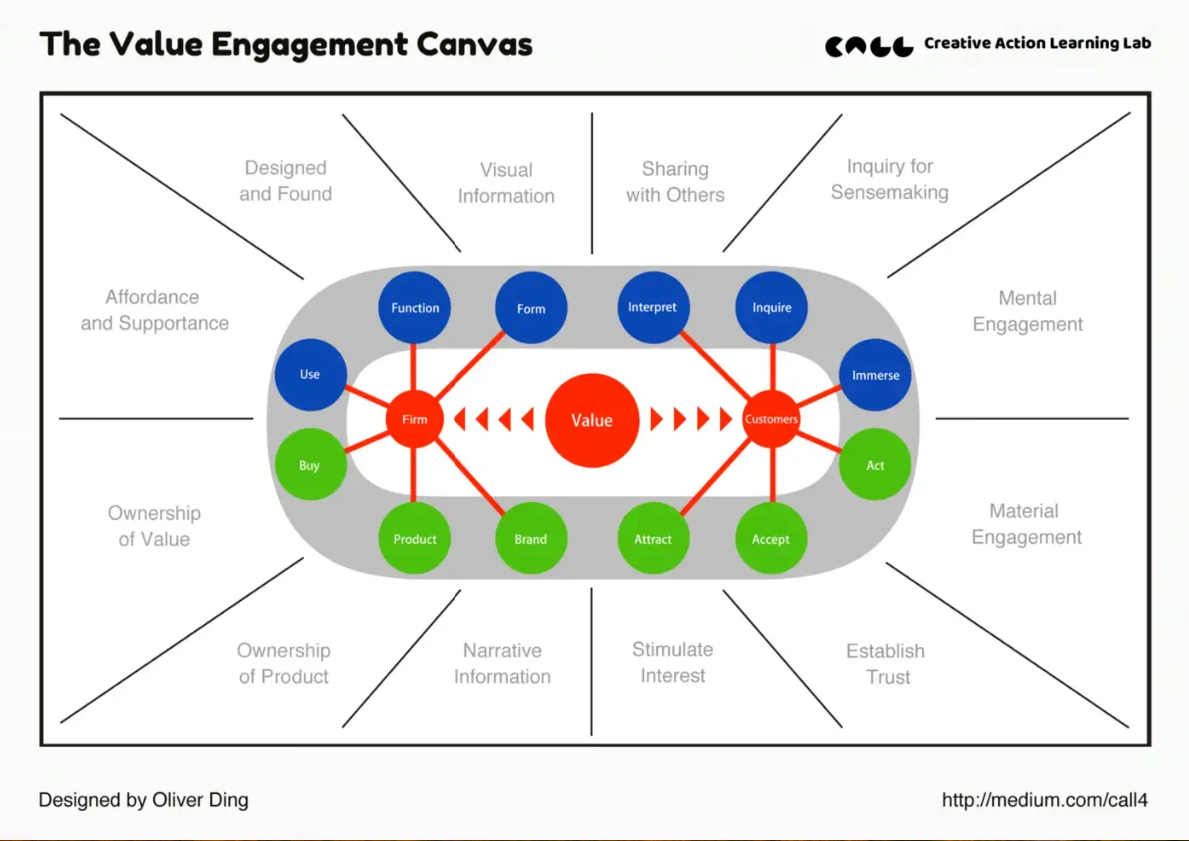
I worked on several theories and a set of frameworks. I only selected relevant themes from my large knowledge theme networks.
A Relevant Theme Network can be understood as a middle area between a Situational Theme Network and the whole Mind.
Mentionship
I also made a diagram about the notion of "Mentionship". In order to discuss more details, I mention our friend Mani Vannan.
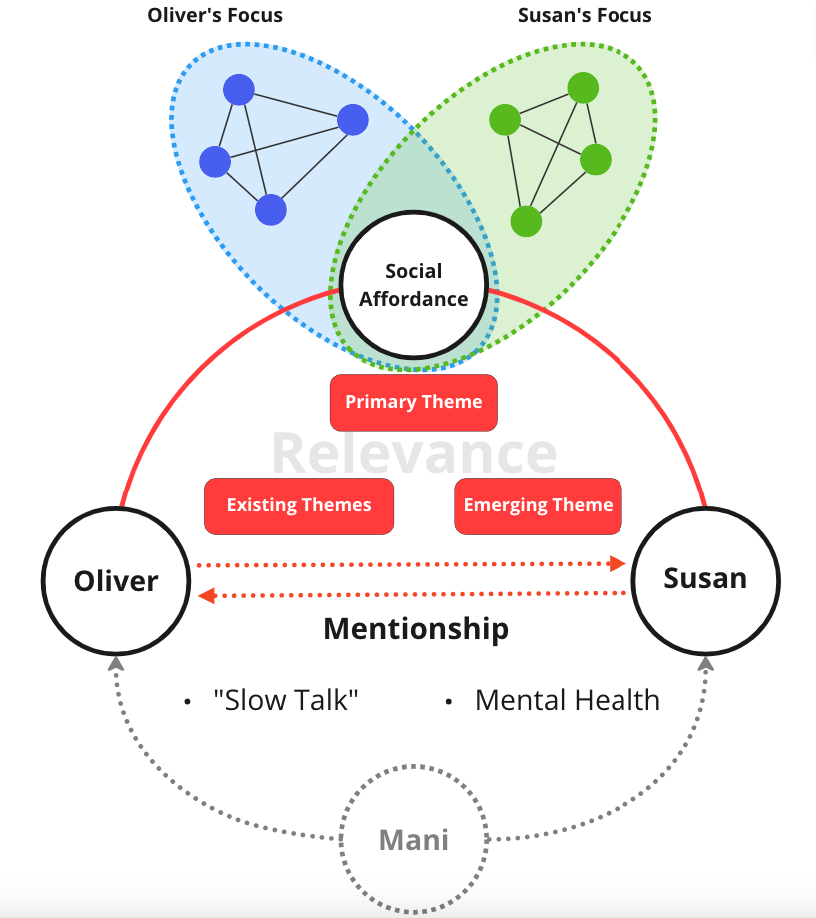
In fact, the "Slow Talk" project was inspired by Mani Vannan’s question:
Hi Oliver, Which of your models will you use to improve communication and enhance understanding?
It inspired me to rethink my knowledge frameworks. In the past several years, I worked on theories about Activity, Relevance, Affordances, Concepts/Themes, and Anticipation. I didn’t directly work in the field of Communication Research.
However, I made some knowledge frameworks about thematic controversy, collaborative projects, slow cognition, etc. Mani Vannan’s question encouraged me to curate these frameworks together.
So, I made a new possible theme called “Slow Talk” which led to the present post.
Mani also cares about Mental Health which is part of his current Relevant Theme Network.
Emerging Theme
Emerging Theme is a really useful concept for applying the Themes of Practice approach to discussing Life Discovery and Personal innovation.
Unlike other themes, Emerging Themes are hard to name and detective by normal people.
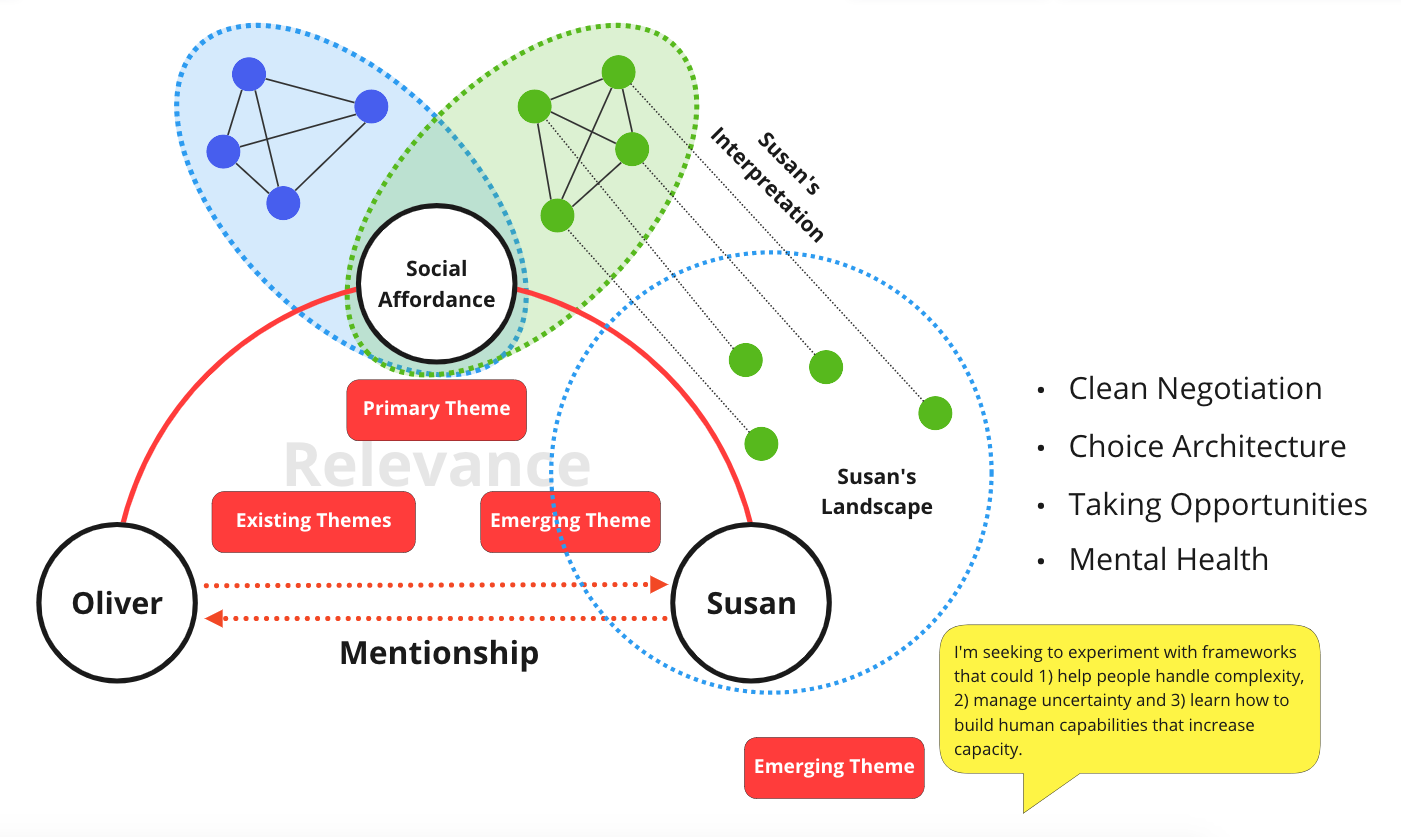
See the above diagram. Susan mentioned her recent anticipation in her message.
I'm seeking to experiment with frameworks that could help people handle complexity, manage uncertainty and learn how to build human capabilities that increase capacity.
It's hard to see this message as one emerging theme. However, we know that she is looking for something about making a good future for human beings.
